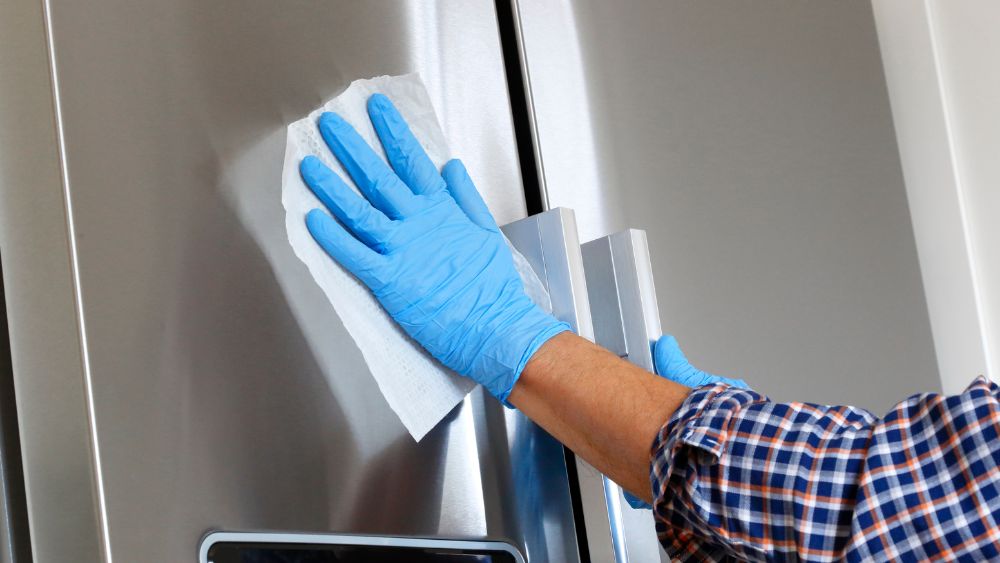
Surface hygiene and surface disinfection
How exactly does correct surface disinfection work? And what mistakes should be avoided at all costs during wipe disinfection?
Surface hygiene affects different areas, such as work surfaces, floors, stretchers, transport coffins and funeral cars. But also other small surfaces such as staplers, door handles or electrical appliances such as PCs, cell phones, etc.
1.cleaning
Before carrying out surface disinfection, soiled or heavily contaminated surfaces are first cleaned. Cleaning is carried out using water with cleaning-enhancing additives.
2. selection of the disinfectant
There is a choice of ready-to-use agents for rapid disinfection, concentrates and ready-to-use disinfectant wipes. Alcohol-based surface disinfectants are used for the disinfection of deceased persons. However, this is only used on non-visible areas. Disinfectant wipes are used for vehicles, for use on the move and for smaller surfaces. Dispenser cans and corresponding holders are also available for this purpose. Alcohol-based products can leave white marks, e.g. on clothing, and can attack plastics and rubber parts if used for long periods. A weak alcohol-based disinfectant is suitable for the covers of stretchers, plastics or vehicles, as well as for electrical appliances, displays and other sensitive objects.
3. wear protective equipment
It is important to put on suitable protective clothing in advance. This consists of a protective gown, safety goggles and protective gloves.
4. observe correct dosage and manufacturer's instructions
Surface disinfectants are available as a ready-to-use preparation or as a concentrate, which must be dosed correctly using suitable tools in accordance with the manufacturer's instructions. Under no circumstances should cleaning agents be added to the solution. In addition, the "shot method" should never be used for dosing. Dosing "by feel" does not guarantee safe disinfection. It is important to know that ready-to-use solutions from disinfectant concentrates must always be freshly prepared and the solution may only be used for a maximum of one working day. Alternatively, there are ready-to-use wipes. These are particularly suitable for on the go and are quick and easy to use. Please generally pay attention to the shelf life of the products. Opened disinfectants must be used within 3 months.
5. observe the cover change method
The cover change method is a procedure for surface disinfection. Only fresh and clean wipe covers or cloths should be immersed in the solution. After the wiping process, the used cover is removed and a new, clean cover is used. Another option is to use disposable disinfectant wipes, which are disposed of after use.
6. carry out the wiping process correctly
The entire surface is completely disinfected. The contact time specified by the manufacturer on the surface disinfectant must be observed. There is no wiping or dry wiping. The surface can be used again as soon as it is visibly dry. Important to note: Sufficient ventilation should be ensured when disinfecting large areas.
7 Hygienic reprocessing of wiping utensils
Used wiping textiles must be disinfectantly washed and thoroughly dried. Cleaning buckets and other utensils must also be cleaned and disinfected after use. Always store them in a dry and clean place.
Further information:
For more detailed and further information on the subject of surface hygiene, e.g. disinfection of floors, medical equipment and sanitary facilities, please refer to the Lavabis disinfection plan guide for morticians.
Recommended products for this article:
►Quick disinfection: https://bit.ly/3X4vZk5
►Disinfection wipes flowpack: https://bit.ly/3v0Fjct
►Disinfectant wipes dispenser: https: //bit.ly/3Xn1vcO
►Disinfection sticker: https: //bit.ly/3GXZGgR
►Disinfection instructions: https: //bit.ly/3ZtJM5e
Watch this blog post as a video:
Click here to go to our socials:
►Website: https://www.lavabis.de/
►YouTube: https://www.youtube.com/@lavabis
►Facebook: https://www.facebook.com/lavabis
►Instagram: https://www.instagram.com/lavabis_com/
►Newsletter: https://lavabis.com/pages/newsletter


